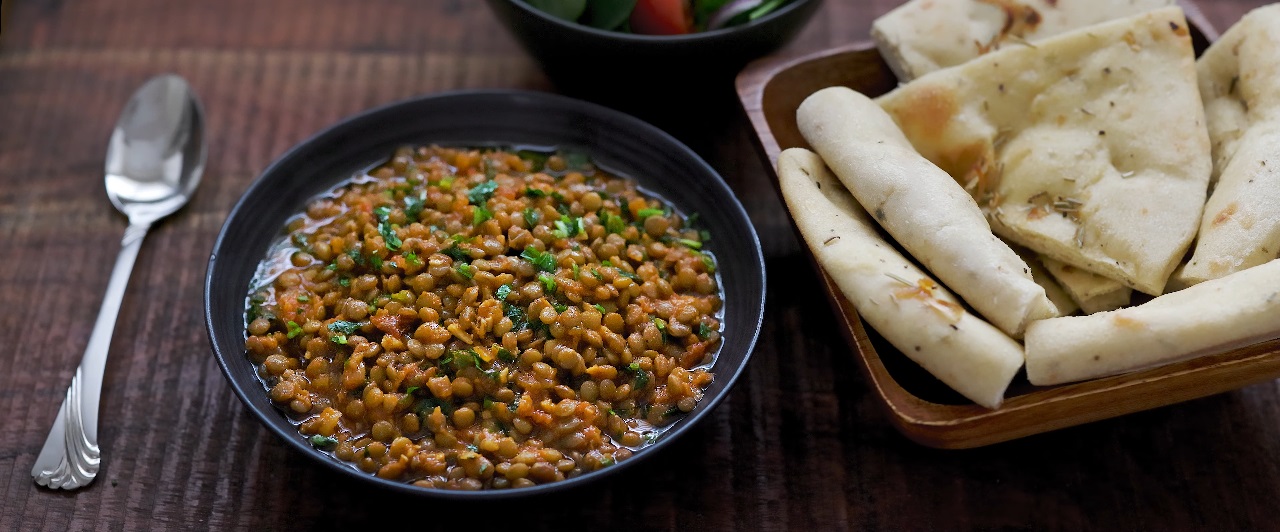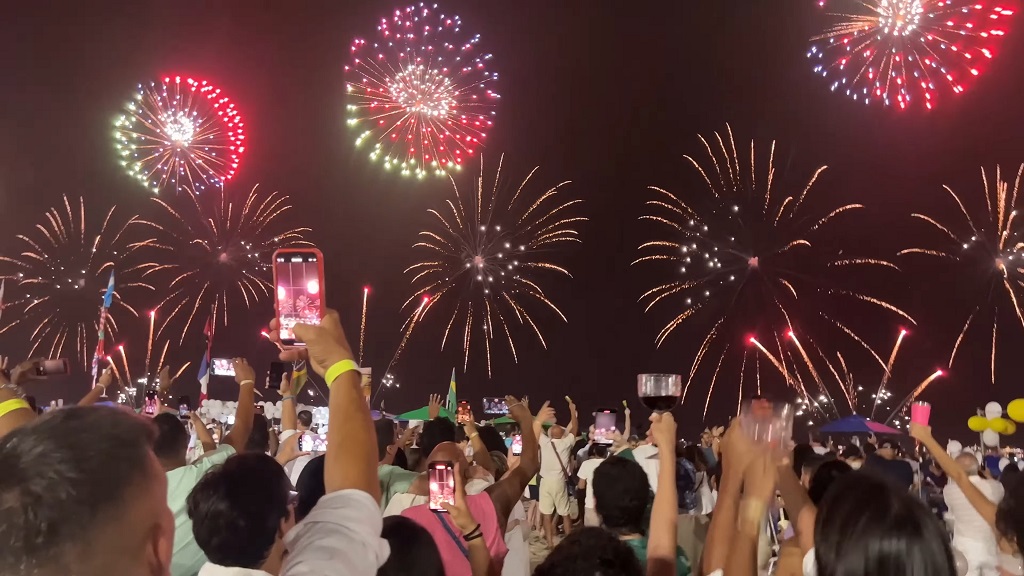
Brazil is a country known for its lively and meaningful celebrations. New Year’s Eve, or Réveillon, is no exception. The festivities include more than fireworks and parties. They carry deep cultural significance and traditions that bring people together in joy and hope.
Christmas in Brazil may have just wrapped up, but the festive spirit lingers like a warm breeze on a summer night.
The decorations and holiday cheer leave their mark, but what makes this time truly magical is how the joyful atmosphere continues to thrive as New Year’s Eve approaches.
There is no pause in the celebrations. Streets come alive, beaches fill with people in white, and the country prepares for an unforgettable night.
In this article, we will explore the unique traditions and fascinating superstitions that make New Year’s Eve in Brazil so special.
1. Jump into the Waves for Luck and Wishes
View this post on Instagram
When the clock strikes midnight in Brazil, millions of people head straight for the ocean. Jumping into the waves is not just fun—it is deeply symbolic.
Brazilians believe that by jumping over seven waves, you can secure good fortune for the year ahead. Each wave represents a wish, and as you leap, you leave behind any negativity from the past year.
Where Does This Tradition Come From?
This ritual is tied to the Afro-Brazilian goddess Iemanjá, who is considered the protector of the sea. People believe the waves connect them to her power, helping them overcome challenges in the upcoming year.
Fun Tip for First-Timers
Face the waves head-on as you jump—never turn your back to them. Locals say this ensures respect for Iemanjá and avoids bad luck.
What If You Are Not Near the Ocean?
For those who cannot make it to the beach, some Brazilians replicate the wave-jumping ritual at home by splashing water in their yards or even jumping in place. It is the intention that counts, not the location.
2. Wear White to Welcome Peace and Prosperity
The tradition stems from Afro-Brazilian religions, particularly Candomblé, where wearing white is a tribute to Oxalá, a deity associated with peace and purity. Over time, this custom became widely adopted by Brazilians of all backgrounds.
Não é lindo ver todo o comércio brasileiro rendido a uma tradição da Umbanda e Candomblé? O branco é o figurino do Ano Novo brasileiro e a prática vem dos rituais de oferendas para Iemanjá, a mãe dos Orixás. Avisa lá aquele seu parente que acha que macumbeiro não é gente. pic.twitter.com/d4ACNGWl02
— Retroescavadora no Suez (@Vilminha_reis) December 6, 2022
While white is the base, Brazilians often accessorize with colors that represent personal goals for the new year:
- Yellow for wealth and success.
- Red for passion and love.
- Green for health.
- Blue for tranquility.
What If You Forget?
No white? No problem. Locals are forgiving, and stores are often stocked with affordable white outfits in the days leading up to New Year’s Eve. It is easy to join in and feel part of the celebration.
3. Offer Flowers to the Ocean for Blessings

As the New Year begins, many Brazilians head to the water’s edge with white flowers, candles, and small offerings.
These are gifts for Iemanjá, the goddess of the sea in Afro-Brazilian traditions, who is believed to bring blessings and prosperity to those who honor her.
Joga flores no mar
Joga flores no mar
Bate com o pé e pede o que quer
a mamãe IemanjaJoga flores no mar!
joga flores no mar!
Quem tem fé não padece,
Quem sofre merece, precisa rezar!Odé, odé
Odé, oda
Odé, odé,
Viva a Rainha do Mar,
Minha mãe Iemanjá ✨️🌊 pic.twitter.com/QOedye1G0U— Exu ❤️🔥 (@exudacalunga) March 30, 2024
People gently place white flowers or small boats carrying candles, fruits, and perfumes into the ocean. If the offering floats away, it is said that Iemanjá has accepted it, signaling her favor for the coming year.
If it washes back to shore, it is believed she has declined the gift, though Brazilians often try again, determined to start the year on good terms with the goddess.
Why White Flowers?
White flowers mean purity and peace. They match the hope for a fresh start. Many see them as a sign of respect for Iemanjá.
What Makes This Moment Special?
Thousands gather at the beach to offer flowers. The ocean lights up with candles, and everyone shares quiet hopes for the year ahead. It is a calm, meaningful pause after the noise of the fireworks.
4. Taste Foods That Bring Luck and Abundance
What you eat on New Year’s Eve in Brazil is more than just a meal. Every dish carries meaning. Families choose specific foods to attract luck, wealth, and good health for the coming year.
Foods to Eat for a Lucky Year

- Lentils: Seen as a symbol of prosperity. Their round shape represents coins, believed to bring financial success.
- Pork: Associated with forward motion and abundance. Many Brazilians include it in their New Year’s meals.
- Pomegranate Seeds: At midnight, people chew seven seeds and keep them in their wallets. This tradition is said to attract wealth throughout the year.
Foods to Avoid
Superstition plays a big role. Poultry and crab are often avoided because these animals move backward or sideways, which people believe can symbolize setbacks or lack of progress.
And Don’t Forget A Toast to Good Fortune
Champagne is the drink of choice for many Brazilians. It is believed to energize you for the year ahead. However, some say this only applies on New Year’s Eve and not the morning after!
5. Join the Party at Copacabana Beach
View this post on Instagram
Copacabana Beach in Rio de Janeiro hosts one of the world’s largest New Year’s Eve parties.
Millions of people gather along the golden sands to celebrate with music, dancing, and fireworks. It is an event like no other, full of energy and excitement.
What to Expect at the Party
The celebrations often begin in the evening and go until sunrise. Live music fills the air, from samba bands to DJs, keeping the crowd moving.
Bars and food stalls line the beach, making it easy to grab a drink or snack while enjoying the festivities.
The Fireworks Show
The highlight of the night is the fireworks display at midnight. For about 15 minutes, the sky lights up with dazzling colors, reflecting on the ocean below.
🇧🇷 | La playa de Copacabana en Río de Janeiro, Brasil, le dio la bienvenida al 2024. pic.twitter.com/XjAike8x4z
— Mundo en Conflicto 🌎 (@MundoEConflicto) January 1, 2024
In 2013, over 2.3 million people attended the Copacabana New Year’s Eve party. It remains one of the largest beach celebrations in the world, second only to Carnival in Brazil.
6. Carry a Bay Leaf to Attract Good Fortune
The bay leaf, known as folha de louro in Portuguese, is often called the “priest’s leaf” due to its spiritual significance.
It has been used in rituals for centuries, symbolizing protection, luck, and clarity.
On New Year’s Eve, many keep a bay leaf in their pocket or wallet. Some write their wishes for the year on the leaf, seeing it as a way to manifest their hopes. Others burn the leaf after midnight, believing the smoke carries their wishes to the universe.
The use of bay leaves dates back to ancient times. In Greek and Roman cultures, they were seen as symbols of victory and success.
7. Celebrate with Colors That Match Your Dreams
Even your underwear can play a role in this tradition. Many Brazilians believe that wearing colorful undergarments on New Year’s Eve enhances the energy of their chosen intention.
Vendors often sell a variety of options in the days leading up to the event.
Each color represents a specific wish or intention:
- Yellow: Attracts wealth and success.
- Red: Symbolizes love and passion.
- Green: Brings health and renewal.
- Blue: Represents tranquility and friendship.
- Pink: Focuses on romance and affection.
- Purple: Inspires creativity and spirituality.
8. Start the New Year on a Positive Note

Some people choose to begin the year on an elevated surface, like a chair or a sturdy table. This is said to symbolize rising above challenges and starting the year with a fresh perspective.
As the clock strikes midnight, they step down with their right foot first, signaling forward motion and positivity.
The phrase “step into the New Year on the right foot” is taken literally in Brazil.
FAQs
How Do Brazilians Wish Each Other a Happy New Year?
The most common phrases are “Feliz Ano Novo!” (Happy New Year) or “Bom Réveillon!” (Good New Year’s Eve). You will hear these greetings exchanged frequently during the celebrations.
Do Brazilians Celebrate with Specific Desserts?
Yes, desserts are an important part of the celebration. Sweet treats like brigadeiros, beijinhos, and panettone are popular on New Year’s Eve. Many families include desserts made with tropical fruits like mango or passion fruit.
Is It Safe to Attend Public Celebrations?
In large crowds, safety is always a consideration. Stick to well-lit areas, keep an eye on your belongings, and avoid isolated spots. Cities like Rio de Janeiro have extra police presence during New Year’s Eve to ensure public safety.
How Do Brazilians Use Pomegranate Seeds for New Year’s Luck?
Brazilians eat pomegranate and keep seven of the seeds in their wallet. This tradition is believed to bring financial prosperity, as the number seven holds spiritual importance.
What Kind of Gifts Are Common for New Year’s in Brazil?
Exchanging small gifts, like flowers, sweets, or symbolic items such as bay leaves or lucky charms, is a thoughtful way to share blessings and goodwill for the year ahead.
Final Thoughts
New Year’s Eve in Brazil is filled with joy and excitement. Every tradition, like jumping waves or offering flowers, feels meaningful and full of hope. The celebrations are lively, colorful, and unforgettable.
If you are there, join in the fun. Wear white, share a toast, and soak up the music and energy around you. These moments bring happiness that stays with you long after the night is over. Brazil makes welcoming the New Year feel truly magical.
















